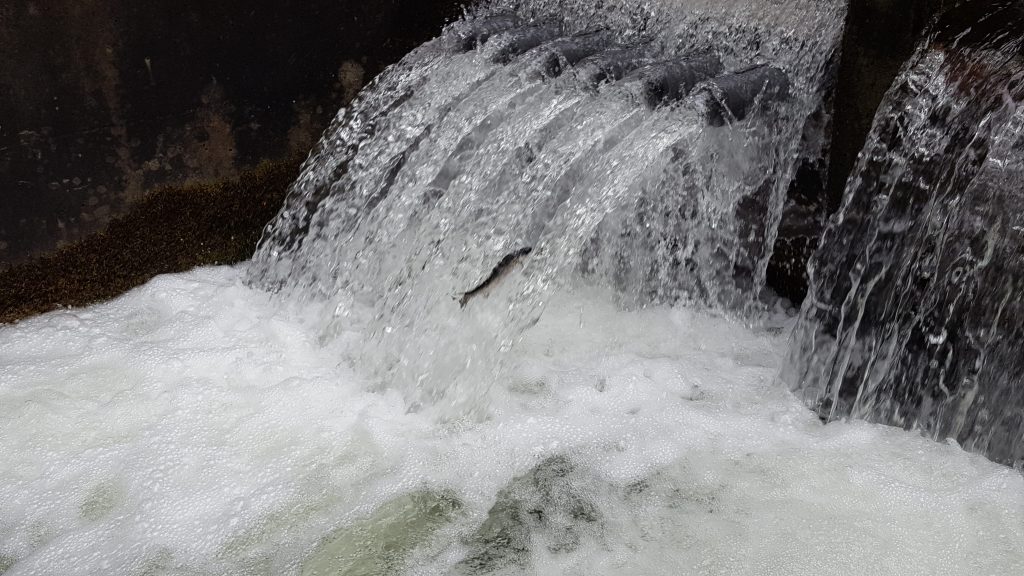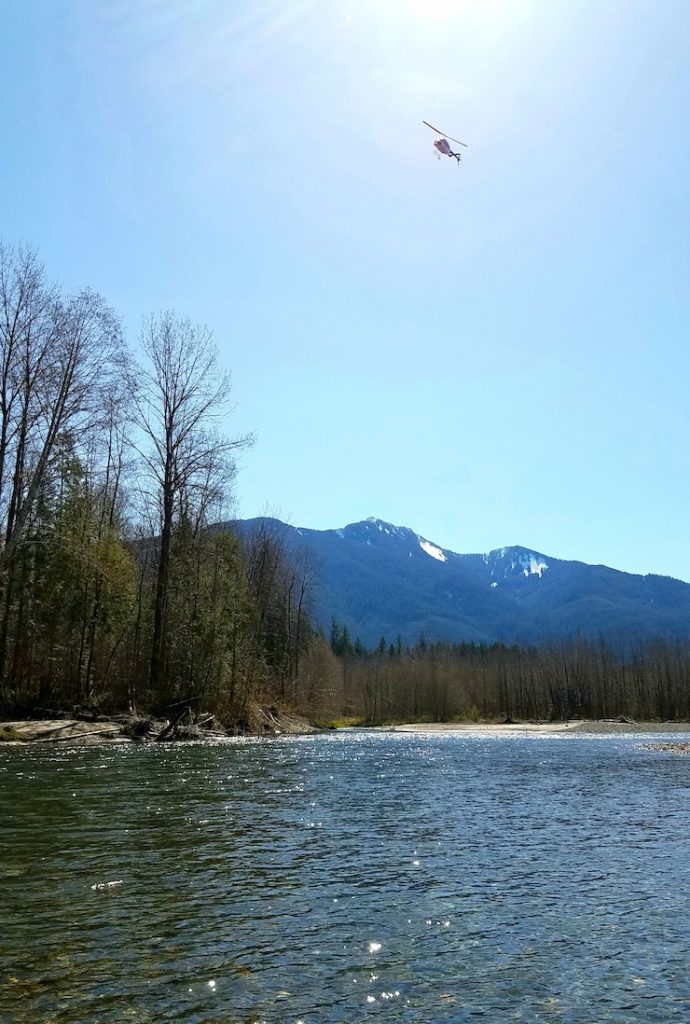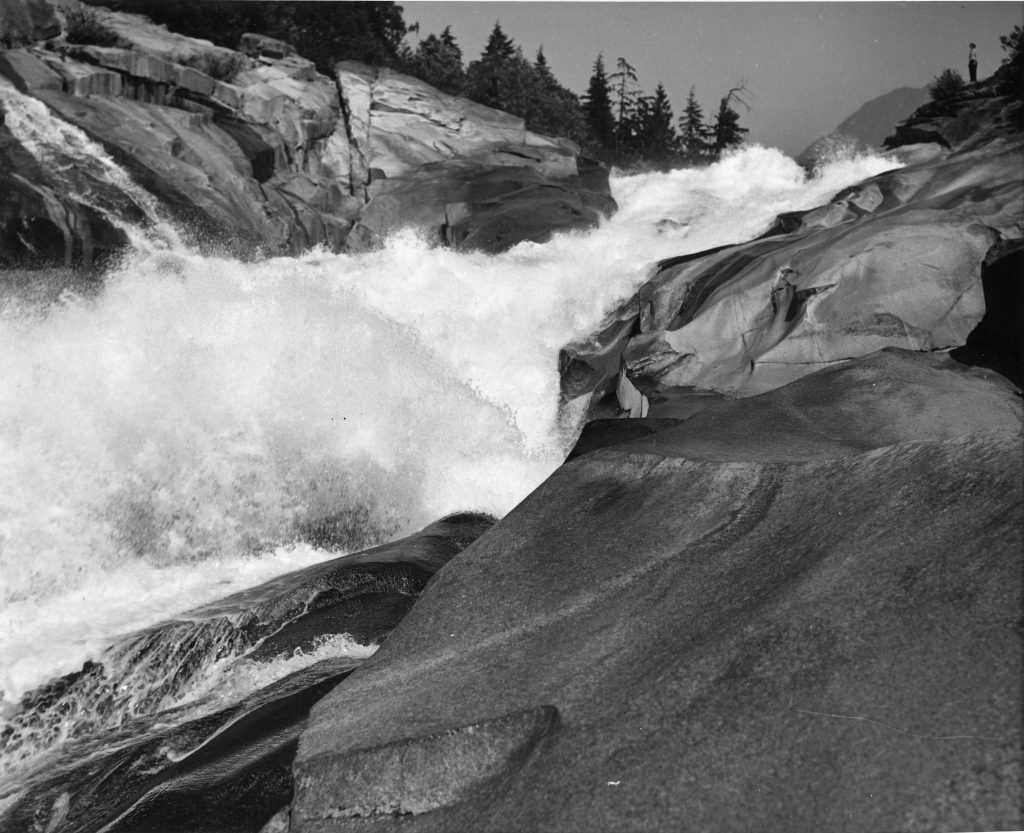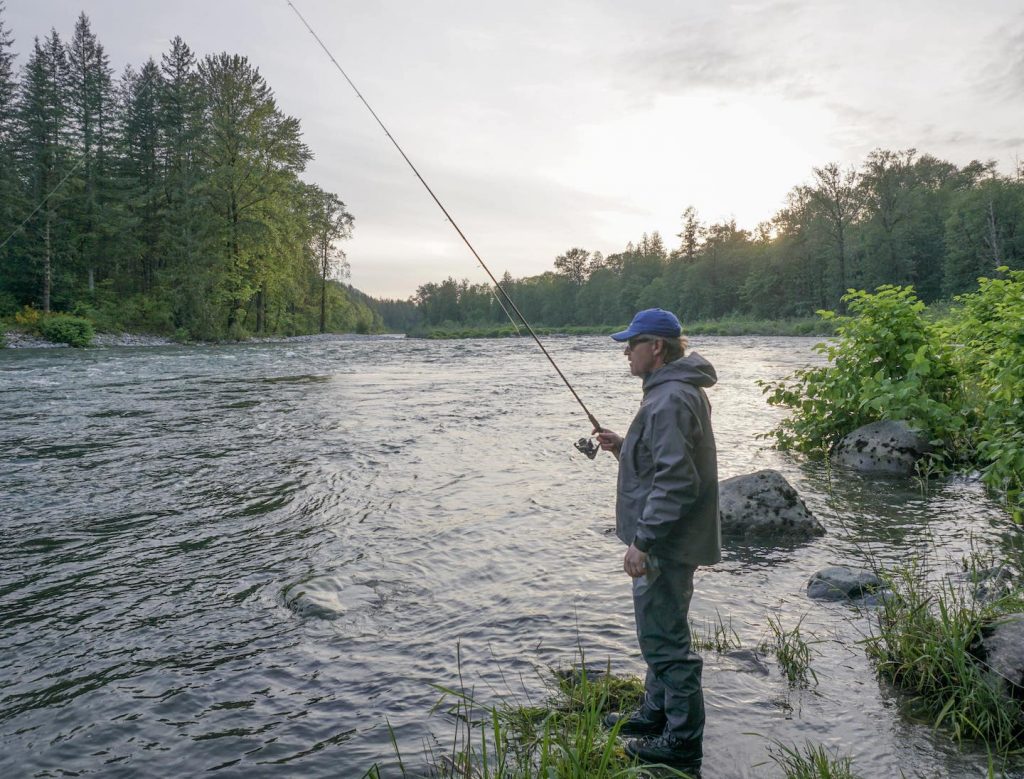
New Local Steelhead Strain Released Into Skykomish As WDFW’s ‘Quicksilver Portfolio’ Also Receives Funding In State Budget
There aren’t many good-news stories in the Puget Sound steelhead world, but today we have two.
- With federal approval in hand, WDFW began releasing a new local strain of summer-runs into the Skykomish, ensuring continuation for the popular fishery on the Western Washington river.

Up to 56,000 smolts started leaving Reiter Ponds this past Friday as the state agency phases out production of out-of-basin Skamania steelhead and replaces it with an integrated broodstock program using fish from the South Fork of the Sky.
In a region where steelheading opportunities have diminished sharply as wild returns have also plunged and the stock was listed, it’s a lifeline for a storied fishery and river system.
“It’s a new era of summer-run fishing on the Skykomish and hopefully we can get back to where we used to be,” said Mark Spada, local angler and president of the Snohomish Sportsmen’s Club this afternoon.
2. That South Fork program is a key part of WDFW’s broadly supported Quicksilver Portfolio, which aims to provide a diversity of steelhead angling options across Pugetropolis – from consumptive to catch and release – while protecting and rebuilding struggling runs, and it just scored nearly $1.7 million in the recently passed state budget.
“We’re thrilled to have this funding included in the WDFW’s budget. It’s a great start to get the ball rolling on the implementation of the Quicksilver Portfolio and stay on track for the recovery of steelhead and fisheries in Puget Sound,” said Jonathan Stumpf of Trout Unlimited. “We understand that this was a unique budget climate and session, with many budget requests and road bumps, so we’re very grateful for the House and Senators [Christine] Rolfes and [Kevin] Van De Wege for working with us on its inclusion in the final package.”
Stumpf says the money will go towards continued required intensive monitoring of the “beloved” Skagit-Sauk wild winter steelhead fishery, as well as “begin work to understand more about spawning estimates for key populations of summer and winter steelhead in Puget Sound.”

“It’s nice to see the hard work and dedication of the PSSAG members finally begin to take off,” Stumpf added.
PSSAG is WDFW’s ad hoc Puget Sound Steelhead Advisory Group and both Stumpf and Spada are members, along with retired state North Sound fisheries biologist Curt Kraemer, Rich Simms of the Wild Steelhead Coalition, Al Senyohl of the Steelhead Trout Club of Washington, Rob Masonis of Trout Unlimited, Andy Marks of Coastal Conservation Association, and Derek Day of Native Fish Society, among others.
Their portfolio – a plan three years in the making, including two years of consultation with steelhead biologists and federal fisheries staffers – was publicly rolled out last May and it includes a mix of continued and new hatchery production, wild broodstock-powered conservation and potential fishery programs for a handful of streams, and increased catch-and-release fisheries on native runs elsewhere as returns allow.
“What makes Quicksilver Portfolio so groundbreaking is that it uses adaptive management and targeted solutions across the Puget Sound rather than a top-down, one-size-fits-all approach,” says Stumpf. “We think it’s vital to get the ball rolling on Quicksilver implementation for the recovery of Puget Sound steelhead and fisheries, and the first few steps are always the hardest, so we’re grateful to the WDFW, Fish and Wildlife Commission, and legislature for support in getting this going.”
AT THE HEART OF THE PORTFOLIO – and perhaps more than just geographically speaking – is the new South Fork program.
Longtime recreational fishing advocate Frank Urabeck had nothing but praise for those who helped get its hatchery genetic management plan, or HGMP, across the finish line.
He thanked Steelhead Trout Club, CCA and Puget Sound Anglers “for their tremendous support and involvement” in rallying fishermen to the cause. WDFW’s Jim Scott, a special assistant in the director’s office, said fishermen and conservation groups had provided 1,400-plus “positive comments” to NMFS.
And Urabeck had kudos for WDFW and the National Marine Fisheries Service “for their very hard work and professionalism” on the paperwork end of things.
“Both agencies were always responsive to public outreach and me particularly,” he said.
The proposal developed after NMFS Regional Administrator Barry Thom in July 2017 pushed WDFW to find an “alternative” stock to Skamanias to hold fisheries over on the Skykomish. WDFW initially mulled using summer-runs from the Tolt River, a tributary of the Snoqualmie which together with the Sky forms the Snohomish.
Meanwhile, to force the issue, the Wild Fish Conservancy sued the state over the Skamanias, leading to a settlement that ended their production on the Skykomish after 2022 (2020 at Whitehorse on the North Fork Stillaguamish) and also barred WDFW from using Tolt fish for eight years.

So WDFW focused on using South Fork fish and, along with the Tulalip Tribes, proposed an HGMP that called for collecting adult steelhead at the Sunset Falls trap, ripening them at nearby state hatcheries for spawning and rearing their progeny for release from Reiter Ponds on the mainstem Skykomish east of Gold Bar.
Late last year, as NMFS began to move towards a decision on that HGMP, WFC threatened a lawsuit and then filed one in federal court in February. The organization claimed that WDFW had violated the Endangered Species Act by collecting, holding and spawning listed steelhead for the South Fork program.
State managers denied any unauthorized take but in March they agreed to a “stay” in which they wouldn’t release smolts until authorized by NMFS, something they had planned on waiting for anyway, according to a letter from Director Kelly Susewind to WFC head Kurt Beardslee.
That set up something of a time crunch as NMFS reviewed public comments on its environmental assessment (as well as for the associated Sunset Falls trap and haul program). The deeper into spring that went, the higher the risk that the young South Fork steelhead would residualize – not want to go to sea to fatten up.
“We were all a little nervous where it was going to go,” said Spada of the Snohomish Sportsmen’s Club.
But then late last week NMFS signed the paperwork and the gates at Reiter Ponds were opened for the smolts to volitionally begin their journey to the sea.
Those that survive their trip to the North Pacific and back will return as adults in late spring and summer 2023 – some the following year after fattening up for an extra year in the ocean.
THESE PARTICULAR STEELHEAD ARE THE RESULT OF the long intermixing of hatchery and wild summer-runs that since 1958 have been trucked around Sunset Falls, an impassable 105-foot-high barrier on the South Fork below Mt. Index, to utilize spawning and rearing habitat further upstream in the system.
Spada termed Wild Fish Conservancy’s lawsuit “a farce” and it was previously derided as the Duvall-based outfit’s “perhaps … most shameful lawsuit yet” because of all the work that went into consensus on WDFW’s Quicksilver Portfolio and the risk the litigation brought to Puget Sound’s last best summer-run fishery.
Today, both are enjoying a moment in the sun.
“We are pleased to implement this program as part of the QuickSilver Portfolio recommended by an advisory group over a two-year period,” said WDFW’s Scott. “Their efforts are paying off with the implementation of this program and new funding from the legislature to improve estimates of steelhead spawners.”
Stumpf called the move to a local brookstock program “a great first step at looking at ways to improve the fisheries and the way our hatchery programs operate.”
“While important to the region, it is just one example of the modified, expanded, or new fisheries we hope to continue establishing across the Puget Sound region and recommended within the Quicksilver Portfolio,” Stumpf said. “But like all recommendations in the portfolio, these new fisheries and hatcheries will need to be adaptively managed to make sure our managers our achieving both conservation and fishery objectives.”

Right now plans call for the annual release of up to 116,000 South Fork smolts by 2024 in support of tribal treaty rights, to provide for state fisheries and help recover wild steelhead in the North Fork Skykomish.
Production of Skamanias – a Washougal-Klickitat stock – will end with next year’s release of 40,000 smolts from Reiter. Just over 110,000 were let go in spring 2019 for this season’s fishery, and 60,000 are being released this spring alongside the 56,000 South Fork smolts.
“We’re glad the state prevailed,” said Spada and he looked forward to improved runs in the future.
Correction and clarification, 2:17 p.m., April 27, 2021: While the South Fork of the Skykomish River above Sunset Falls was historically inaccessible to steelhead, the steelhead for the South Fork broodstock program are still in fact a part of the overall ESA-listed Puget Sound stock. The article originally said they were not. Also, even as NMFS did not have a biological concern with the release of the smolts, it’s good to note that federal overseers are “still in the process of working through the full ESA process with WDFW and the Tulalip Tribes,” according to a spokesman.
Correction, 1 p.m., May 21, 2021: Skamania summer steelhead production ended on the North Fork Stillaguamish after the spring 2020 release, not this year as originally mistakenly stated.



